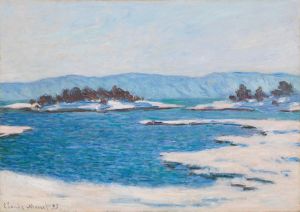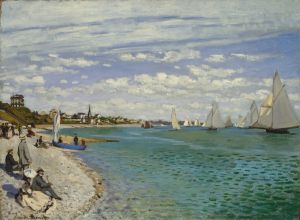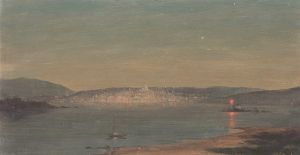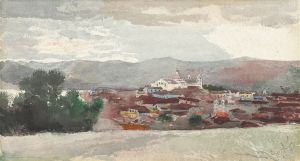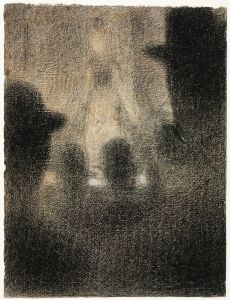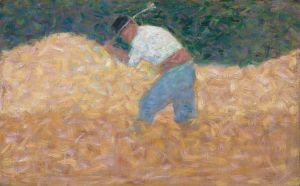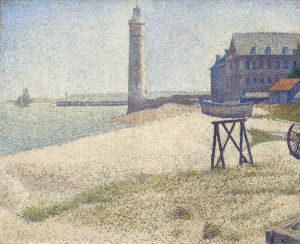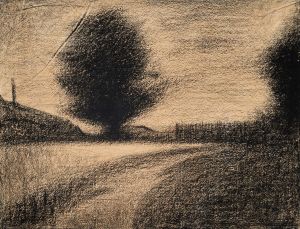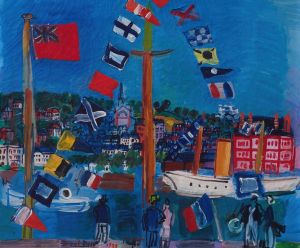
Moored Boats and Trees
A hand-painted replica of Georges Seurat’s masterpiece Moored Boats and Trees, meticulously crafted by professional artists to capture the true essence of the original. Each piece is created with museum-quality canvas and rare mineral pigments, carefully painted by experienced artists with delicate brushstrokes and rich, layered colors to perfectly recreate the texture of the original artwork. Unlike machine-printed reproductions, this hand-painted version brings the painting to life, infused with the artist’s emotions and skill in every stroke. Whether for personal collection or home decoration, it instantly elevates the artistic atmosphere of any space.
"Moored Boats and Trees" is a painting by the renowned French artist Georges Seurat, who is best known for pioneering the technique known as Pointillism. This painting is a lesser-known work compared to his monumental piece "A Sunday Afternoon on the Island of La Grande Jatte," but it still exemplifies Seurat's innovative approach to capturing light and color.
Georges Seurat was born on December 2, 1859, in Paris, France. He studied at the École des Beaux-Arts in Paris, where he was influenced by the Impressionists but sought to bring a more scientific approach to their techniques. Seurat's interest in color theory and optics led him to develop Pointillism, a technique that involves applying small, distinct dots of color to a canvas, which visually blend together when viewed from a distance.
"Moored Boats and Trees" is an example of Seurat's exploration of this technique. The painting depicts a tranquil scene of boats moored along a riverbank, with trees lining the shore. The composition is characterized by its serene atmosphere and the meticulous application of color. Seurat's use of Pointillism in this work demonstrates his ability to convey light and shadow through the juxtaposition of complementary colors.
The painting is believed to have been created during the mid-1880s, a period when Seurat was actively developing and refining his Pointillist technique. This era was marked by Seurat's dedication to understanding the scientific principles of color and light, influenced by the works of scientists such as Michel Eugène Chevreul and Ogden Rood. These influences are evident in "Moored Boats and Trees," where Seurat's precise dotting technique creates a harmonious blend of colors that captures the natural beauty of the scene.
Seurat's work, including "Moored Boats and Trees," was part of a broader movement known as Neo-Impressionism. This movement sought to build upon the innovations of the Impressionists by incorporating a more structured and methodical approach to painting. Seurat's contributions to this movement were significant, as he provided a new way of seeing and representing the world through art.
While "Moored Boats and Trees" may not be as widely recognized as some of Seurat's other works, it remains an important piece within his oeuvre. It reflects his commitment to exploring the possibilities of color and form, as well as his desire to capture the essence of a moment through a scientific lens. The painting is a testament to Seurat's skill and vision, showcasing his unique ability to blend art and science in a way that continues to influence artists to this day.
Georges Seurat's life was tragically short; he died on March 29, 1891, at the age of 31. Despite his brief career, his impact on the art world was profound. His innovative techniques and dedication to exploring the interplay of color and light have left a lasting legacy, and works like "Moored Boats and Trees" continue to be studied and admired for their technical brilliance and aesthetic beauty.





